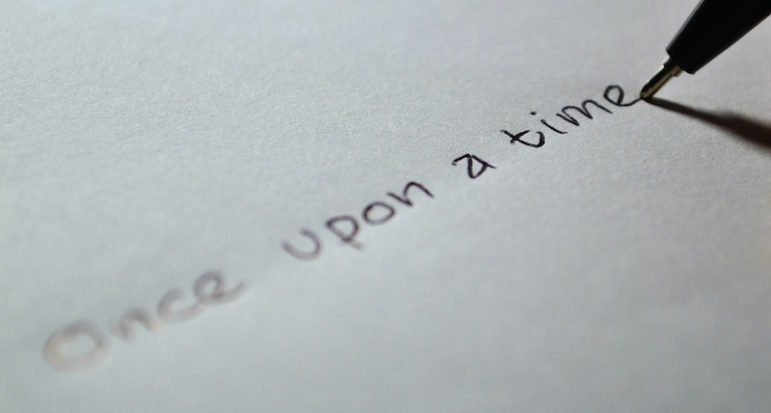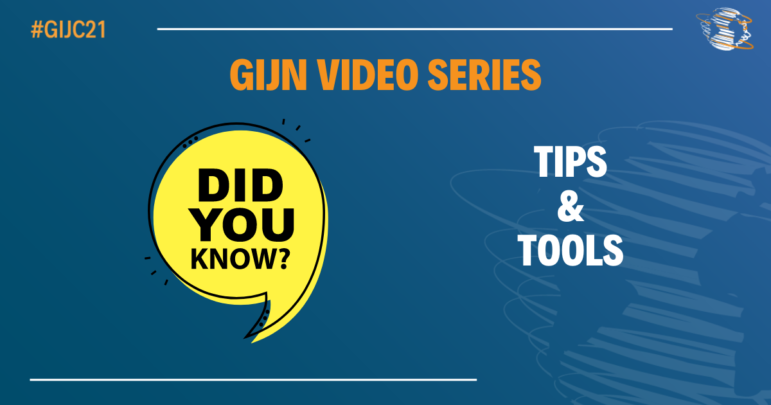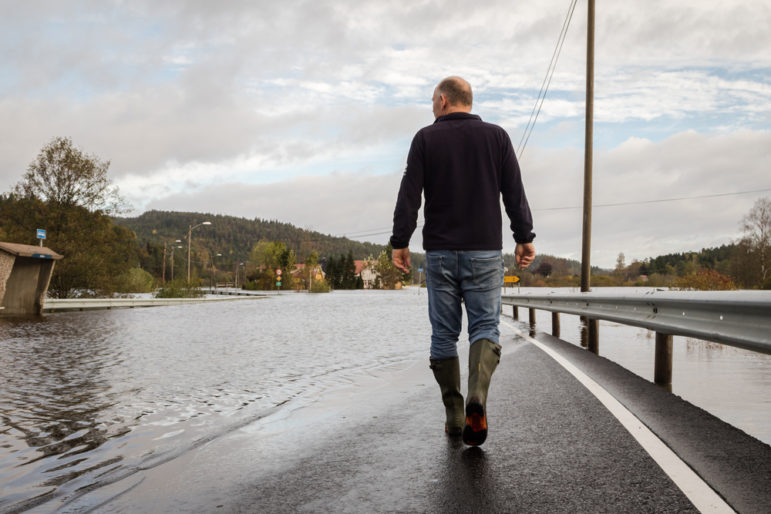

Photo: Pixabay
How to Write Openings That Hook the Reader
Read this article in
বাংলা | 中文 | العربية | Русский

Photo: Pixabay
Beginnings are notoriously tricky for any writer. For news reporters the advice is simple — start with the “new” thing in your story, and make sure there is a verb in there: a person has said something; a report has revealed something; authorities are looking for someone, warning about something, planning to do something; and so on.
But in longform and feature writing the approach is more subtle. Although we can choose to report that something has been “revealed” right at the start, this risks removing tension from the story and leading the reader to abandon it before they have the full picture.
Instead, then, journalists use a number of techniques to keep the reader engaged across a longer format — with the important implied promise that the story is going to be worth it.
So, for anyone struggling to think of a way to start a longer story — or feel that you can improve the approach you’ve chosen — I’ve pulled together seven types of beginnings that are used in longform reporting and feature writing, with some considerations to bear in mind — and plenty of examples.
Beginnings: Start from One Person

Amelia Gentleman’s story leads on the “case study” of David Clapson.
A very common technique in longer features is to start with a person. Typically that person is the entry point into the bigger issue or theme you are exploring, and after a few paragraphs you “pan out” to “reveal” the reason why you’re talking so much about this person.
Here are some examples:
The Guardian / Amelia Gentleman
‘No One Should Die Penniless and Alone’: The Victims of Britain’s Harsh Welfare Sanctions
“We know that David Clapson was actively searching for work when he died because a pile of CVs he had just printed out was found a few metres from his body. The last time he spoke to his sister, a few days before he died, he told her he was waiting to hear back about an application he had made to the supermarket chain Lidl.”
The reveal (paragraph 4): “The circumstances of Clapson’s death have been scrutinised by many of the groups campaigning for a reform of the government’s increasingly punitive (or rigorous, depending on your perspective) sanctions system …”
Shorthand Social / Jonny Jacobsen
The Big Issue: A Hand Up from the Streets
“Noel Cullinane, 50, is Birmingham born and bred.
‘Before I was on The Big Issue, I was on the canals and a soldier in the army.’”
The reveal (paragraph 8, but they’re short paragraphs!): “For Noel, and hundreds like him across the country, The Big Issue is a lifeline.”
IQ4News / Yemisi Akinbobola, Paul Bradshaw, and Ogechi Ekeanyawu
“It is January 2014.
Among a group of about 30 young boys, some as young as 12, are Ebuka Ogbuehi and Joel Izeh from Lagos. They are about to board a boat at Calabar seaport in southeast Nigeria, going to neighbouring Cameroon. With them are two football coaches — one known to the boys as their coach, Emma (pronounced Ima) — along with a nurse, a dry cleaner and Mr Eric Fred Toumi: a football agent.”
In this case the reveal doesn’t come until chapter 2, “Player trafficking,” which begins:
“According to a 2013 study conducted by Paris-based charity Foot Solidaire, about 15,000 young boys travel to Europe and other countries from West Africa each year.”
This is because the story of the boys’ experience is compelling enough to carry the reader without any reference to the wider world, for that length of time. But an alternative approach would break off from their story and return to it later, as a technique to make us read the more factual background to the issue while we wait to find out the fate of the boys and agent.
Financial Times / James Kynge, Leila Haddou, and Michael Peel
How China Bought Its Way into Cambodia
“In Cambodia’s Chinese business community, ‘Big Brother Fu’ is a name to be reckoned with. A former officer in China’s People’s Liberation Army, his thickset build and parade-ground voice reinforce the authority suggested by his nickname. But his physical bearing pales next to the heft of his political connections. Few, if any, foreign investors in this small but strategically important Southeast Asian nation enjoy access as favoured as that of Fu Xianting.”
Starting with Action
A story moves particularly quickly when it begins with that person performing some sort of action. This might be talking (to you, or a colleague or friend); it might be remembering, cooking, or performing some sort of action related to their job.
A good example is The Lawyer Who Takes the Cases No One Wants – he drives:
“Two or three times a month, Tom Giles says goodbye to his wife and three children at their home in Abingdon, and drives north, through Oxfordshire, to Campsfield House immigration detention centre.”
Notably, this description of his driving allows the sentence to also establish a setting:
“This is Tory heartland — rich fields, manicured villages, 4x4s. Campsfield sits at the end of a long country lane, opposite Oxford airport’s private jets and training planes. On the constituency map it is perched at the end of a Tory promontory: David Cameron’s Witney constituency flows down one side, Boris Johnson’s former fiefdom of Henley down the other.”
Starting in a Place

Place plays a central role in this BBC feature.
In this technique, although people typically still kick off the story, the setting takes on a significant role.
BBC / Rustam Qobil
“Khojabay is a fisherman who lives in a desert.
Almost everyone in his village used to fish for a living but in the 1970s the fish died, and the sea began to dry up.
Steadily, over the past 40 years, around 60,000 sq km of water, in places 40m deep, has evaporated into thin air.
The Aral Sea, in Central Asia, used to be the fourth largest lake in the world, after the Caspian Sea, and Lakes Superior and Victoria. Now barely 10% of it is left.”
Note that this works because the setting itself and the changes it is going through is the story, and is itself a character of sorts.
Wait But Why / Tim Urban
From Muhammad to ISIS: Iraq’s Full Story
“On the morning of Saturday, August 2nd, I got in a taxi in Erbil, the regional capital of Kurdish Iraq, and asked the driver to take me to the Khazir refugee camp.
This was a scary-ish thing to do.
The ‘scary’ part is a result of the fact that the Khazir camp is outside of the borders of the somewhat autonomous Kurdish region, one of the only secure parts of the country.”
Again, we still have a protagonist (the reporter, and the driver is there too) but the setting is what we remember. It is the source of fear – peril – in this intro, which immediately gives us a problem: Will the protagonist stay safe?
100 Reporters / Khadija Sharife
Trade Secrets: Coca-Cola’s Hidden Formula for Avoiding Taxes
“The hotel door was the dividing line: inside, a first-world fantasy of starched uniforms, low voices, and crisp cool air; outside, color and heat, vendors selling knickers, groundnuts and sunglasses along cracked sidewalks. I sat atop my father’s shoulders, holding his ears, taking in this snapshot of Lusaka in the late 1980s. Zambia was a country in the throes of hunger riots caused by massive reduction in the public budget, a chain reaction that engulfed most of Africa during a period known as the ‘lost decade.’ One country toppled after another like a game of dominos playing to the rules of the Washington Consensus. My father was on the board of a Gulf development bank, assisting – or so they were under the impression – efforts to alleviate poverty in various African countries. The doors between the inside and outside of the Lusaka hotel where we stayed were as much symbolic as they were tangible; made of money, race and social class. But the inside and outside had something in common: Coca-Cola, whether dragged by vendors on small carts or poured with a flourish in swanky restaurants.”
Those first few words do so much work: “The hotel door was the dividing line” introduces both a setting and a problem – dividing line between what?
This approach is also a good example of a setting as a metaphor, often used when the story is about social divisions that are mirrored in the settings, or system complexity mirrored in an architecture (you might even read it being described as like an Escher print).
Start with a Detail
If your story involves a striking or intriguing detail, that might provide a starting point. Here’s an example from The Children, the Hidden Homeless and the Women Who Have Suffered Domestic Violence – These Are the Stories from inside a Manchester Foodbank in 2018:
“A tiny pair of shoes, along with nappies for a newborn, sit on shelves in the storeroom of the Manchester Central foodbank.
The larder is well-organised and well-stocked with all kinds of household provisions.”
This can be used as metonomy or synecdoche – where part of something represents the whole – or as metaphor: For example a complex toy might act as a metaphor for the system you are trying to investigate.
If you start in this way, the implicit promise is that at some point the meaning of this detail will be made clear. In the story above, for example, the next line is: “It’s testimony not just to the generosity of ordinary Mancunians, but the surge in demand for emergency help.” So the reader’s curiosity is quickly satisfied. Leave it too long and you risk the reader becoming frustrated, and/or doubting that you had a point in focusing on that detail.
The cliched version of this is the “child’s teddy bear” of war reporting, notoriously satirized in the newsroom sitcom Drop The Dead Donkey.
Starting with a Question

This story’s central question is compelling enough on its own to keep the reader engaged in the quest for the answer.
Most long stories raise an implicit question in the reader: By starting with a person, or a place, or an action, the question that is implied is “Why is this person/place/scene important?” But sometimes you raise an explicit question.
In David Cox’s piece After the Ice Bucket Challenge: They Raised $115m for the Fight against ALS. so How Did They Spend It?, for example, the opening is:
“When a viral challenge raised a huge sum to fight a little-understood disease, the charity that got the money was overwhelmed. As the first breakdown of spending emerges, David Cox asks what happened next — and what it means for patients.”
This is actually the standfirst to this story, but it establishes the problem and the character who will pursue the quest (mystery, to be specific).
Notably, the first paragraph of the story proper then reverts to other techniques around character, setting, and a problem:
“At the ALS Association (ALSA) headquarters in Washington DC, Carrie Munk vividly remembers the phone call that first alerted her to the ice bucket challenge. ‘It was the first week of August and I was at an off-site meeting,’ says Munk, ALSA’s chief communications officer. ‘I picked up the phone and it was the executive of our centre in Massachusetts. He said, ‘You all need to be aware that something big is happening.’ So we quickly checked our fundraising figures, and out of nowhere there was about a $50,000 increase on where we’d been the previous year.’”
Starting with a Problem

ProPublica’s Cruise Control uses an interactive image of a cruise ship to invite users explore the many “problems.”
Similar to the question approach, this sets out a problem more implicitly, rather than explicitly raising a question.
ProPublica / Lena Groeger
“For more than 22 million passengers each year, a cruise is a dream vacation, an all-inclusive journey of fun and luxury, a chance to simply relax.
But for hundreds of people, the reality is far from the dream. Last year over 1,700 passengers and crew members fell sick from gastrointestinal illnesses like norovirus. Since 2012 at least seven children have drowned or nearly drowned in cruise ship pools that rarely have full-time lifeguards. This year, a 21-year-old college student fell overboard and was never found — one of at least two dozen incidents in the last two years in which cruise passengers or crew have gone overboard, according to media reports.”
Note the hook-and-twist approach: The first paragraph establishes something ‘good,’ and we already know – expect – as readers that this idyllic scene is going to be disrupted.
That expectation is fulfilled in the second paragraph: “But…”
What is important here is that the “but” is factual and concrete: 1,700 people, not just “many people.” And it becomes increasingly concrete: The facts move quickly from those 1,700 people to “seven children” and “a 21-year-old college student.”
That concreteness is vital: It establishes that the reporter has gone out and done the work. If it was vague and general we immediately create a seed of doubt: Is this just someone skirting around a subject that they haven’t actually really investigated?
It makes an implicit promise: Here is the big picture – very soon we’ll break that down into more specifics.
Starting with a Revelation

This BBC Online report is a text version of a broadcast investigation – leading like this relies on the details being more interesting than the end result. Sometimes that’s the case in broadcast, but it is harder to do in text.
More common in news stories than longer features, this approach tends to lead on a key fact in your investigation, with the phrase “an investigation has revealed” or “figures have revealed” or “documents have revealed.” For example:
BBC / Samantha Poling
Bankrupts Enjoy ‘Lavish Lifestyles’
“Criminals and dishonest debtors are exploiting weaknesses in the bankruptcy system to keep hold of their assets and wealth, a BBC investigation has revealed.”
This then establishes a hook for the reader to find out more about this revelation. The story typically then goes on to provide a list of examples, before going deeper into specifics relating to particular individuals or cases.
Notably, this approach focuses more on the revelatory fact than perhaps the deeper complexity surrounding it; the inverted pyramid format that it relies on assumes an impatience on the part of the reader, guaranteeing the most important details will come first and we can abandon reading without worrying that we have missed those.
The advantage of this approach — the reader will get the most important information — is also its weakness: Readers might be more likely to read superficially.
In contrast, the other approaches detailed above take the reader’s patience for granted, sometimes burying more important information lower in the story.
The advantage is that this encourages deeper engagement; the disadvantage is that you risk readers turning off because they are frustrated or bored at not getting to the story’s key point quickly enough. Negotiating these tensions is part of the editorial art.
Experiment
Experimenting with these different approaches to beginnings can help you clarify a story for yourself: Is it about a person or a place? Did a detail stick in your mind because it represented something bigger about the story?
It can also force you to justify the choices that you make, and ensure that you follow up on those. If you introduced a person at the start, did you fulfill the implicit promise that your story would explain their importance? Did the reader finish the story knowing what had happened to them (or was expected to happen)?
If you’ve seen other techniques for beginning longer stories and features, please let me know in the comments or on Twitter @paulbradshaw.
This article first appeared on Paul Bradshaw’s Online Journalism Blog and is reproduced here with permission.
 Paul Bradshaw runs the MA in Data Journalism and the MA in Multiplatform and Mobile Journalism at Birmingham City University and is the author of a number of books and book chapters about online journalism and the internet, including the Online Journalism Handbook, Finding Stories in Spreadsheets, Data Journalism Heist, and Scraping for Journalists.
Paul Bradshaw runs the MA in Data Journalism and the MA in Multiplatform and Mobile Journalism at Birmingham City University and is the author of a number of books and book chapters about online journalism and the internet, including the Online Journalism Handbook, Finding Stories in Spreadsheets, Data Journalism Heist, and Scraping for Journalists.









